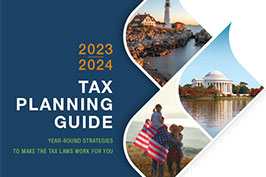How a construction company can build an ESOP
Construction company owners looking to secure long-term benefits for their employees can adopt an Employee Stock Ownership Plan (ESOP). An ESOP is a type of employee benefit and retirement plan governed by the Employee Retirement Income Security Act of 1974 (ERISA). Designed to provide retirement income, it also serves as a vehicle for transferring company ownership to employees. In this article we’ll use construction companies in the example to explore the fundamental steps and key aspects of building a successful ESOP.
The basics
Employee Stock Ownership Plans (ESOPs) offer a strategic approach that extends beyond the immediate advantages, providing long-term benefits that impact a company’s legacy, recruitment efforts, employee retention and retirement strategies.
When considering an ESOP for construction companies, it’s essential to understand the tax advantages that come with such plans. Benefits such as seller tax deferrals and S-Corporation ESOP tax shields can reduce tax burdens thereby significantly contributing to the financial health of the company and its stakeholders. By implementing an ESOP, construction companies not only create a solid financial foundation but also pave the way for a robust legacy.
CTA – What makes us different

ESOPs also play a crucial role in recruitment and retention. An ESOP enhances the company’s appeal to potential employees by offering them a share in the business. This not only attracts top talent but also fosters a sense of ownership and dedication among existing staff, contributing to higher retention rates.
Moreover, an ESOP serves as a valuable tool for retirement planning. Construction company owners can use this plan to structure a sustainable exit strategy while ensuring the ongoing success of the business. The long-term benefits of ESOPs make them an attractive option for most corporations.
The complicated part
While the benefits of ESOPs for construction companies are evident, the process of setting up and managing these plans can be intricate and requires careful consideration of legal and financial aspects. When setting up an ESOP, company owners must understand and navigate regulatory requirements, valuation processes and plan design.
Testimonial
On the other hand, managing an ESOP is an ongoing commitment that involves transparent communication, financial oversight and employee engagement. Construction companies will need to establish clear guidelines for the distribution of shares, voting rights and communication channels. This ensures that employees understand their roles in the ESOP and are actively involved in the company’s decision-making processes.
Accounting firms for construction companies can be a valuable ally in the ESOP journey. These professionals assist in the initial setup, ongoing financial management and regular compliance checks. Their guidance ensures that the ESOP remains a sustainable and effective tool for the construction company’s success.
CTA – Your tax planning guide

